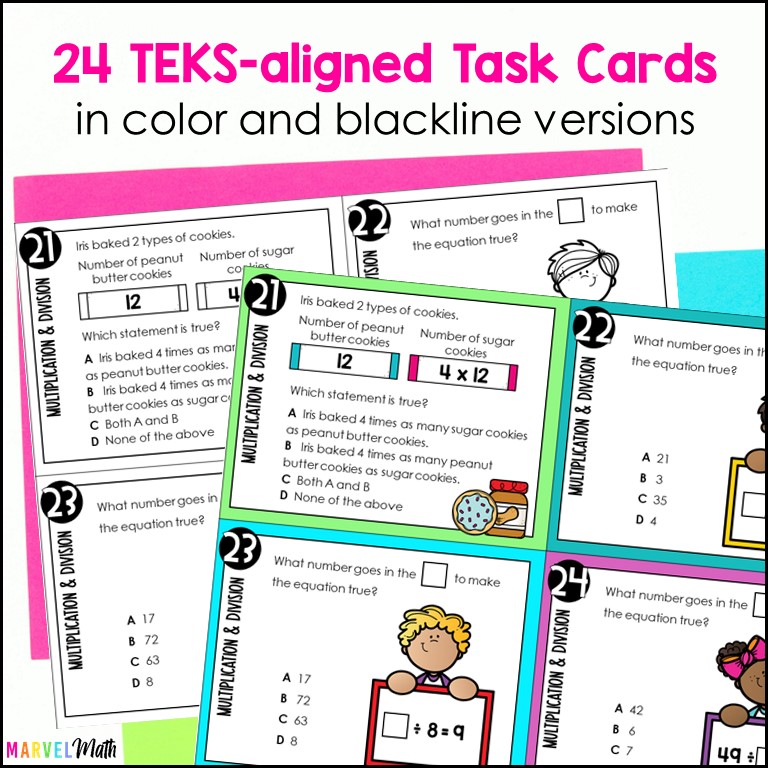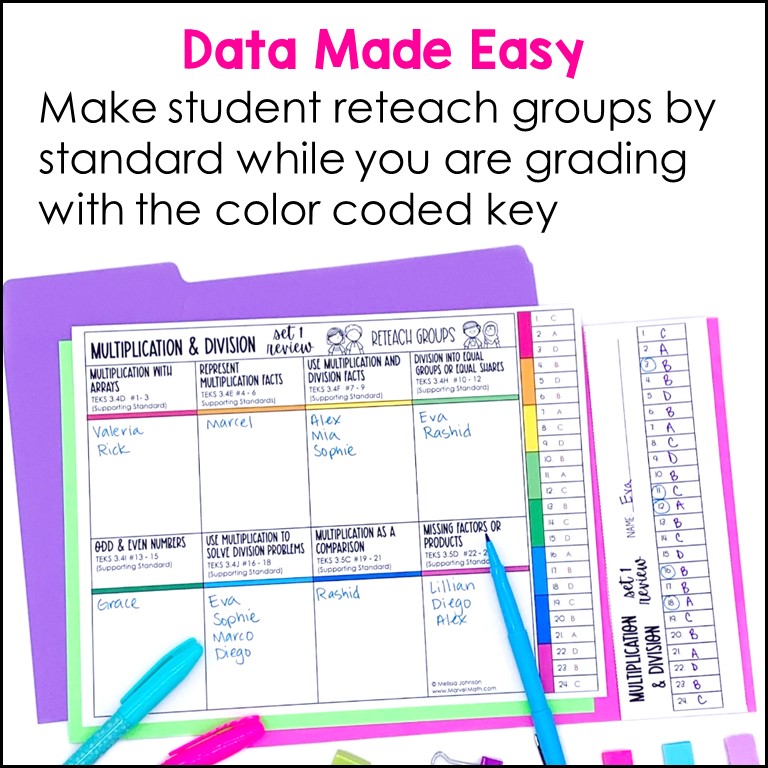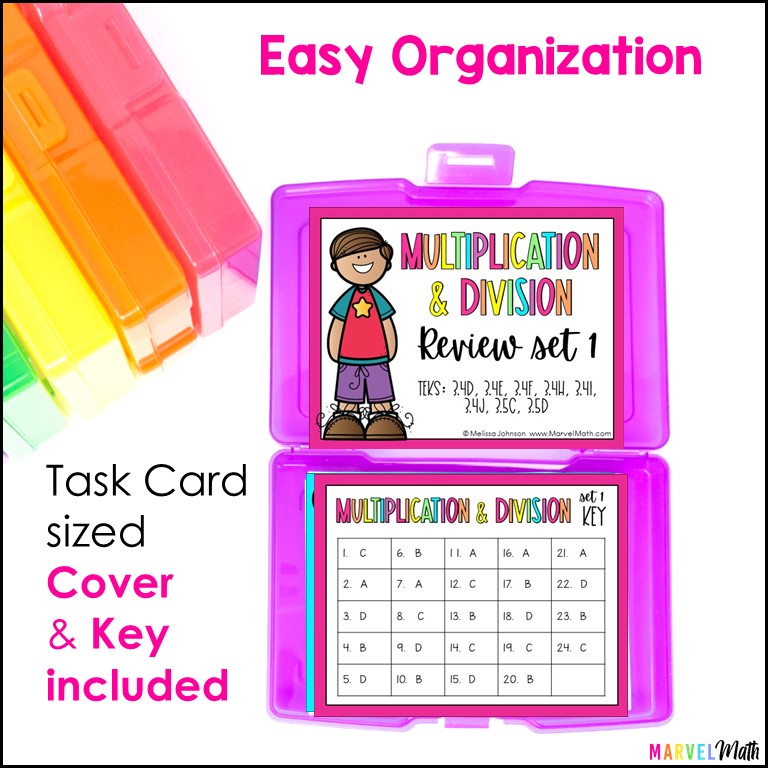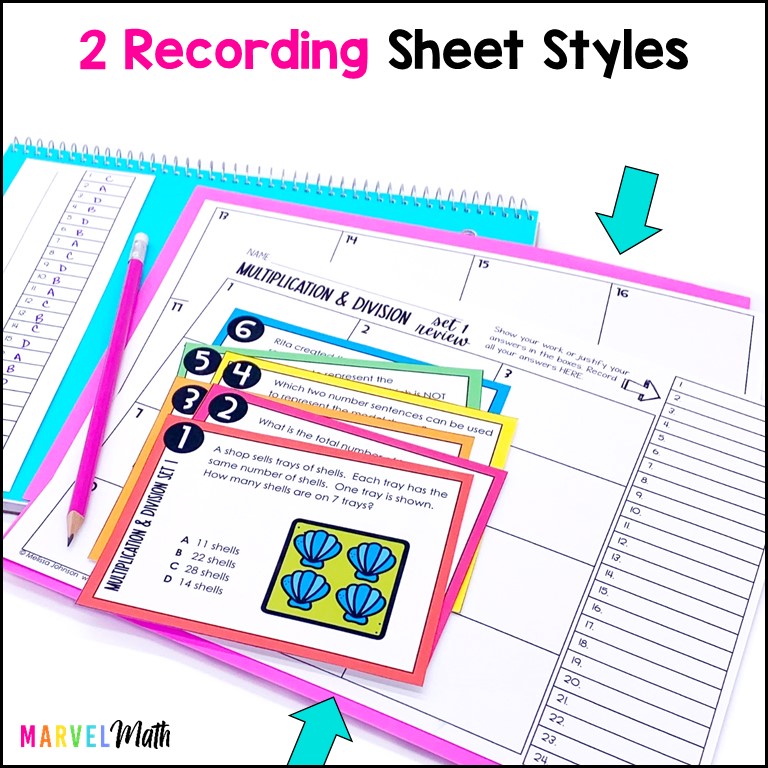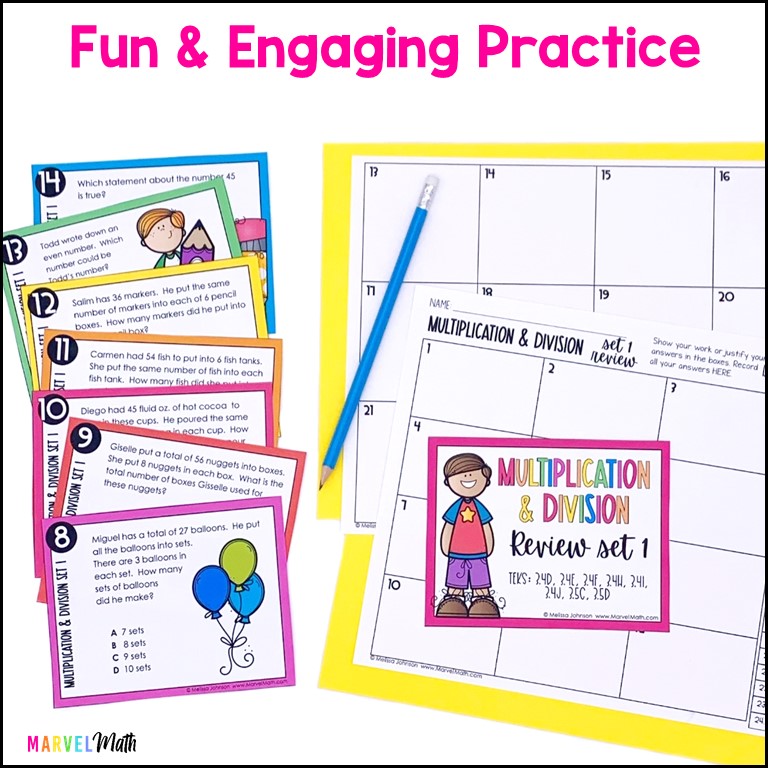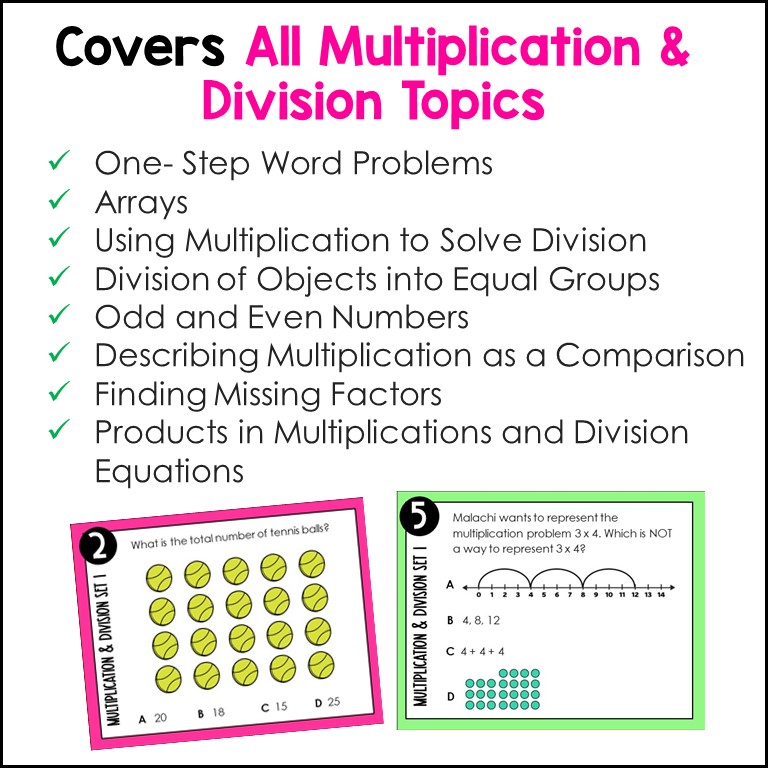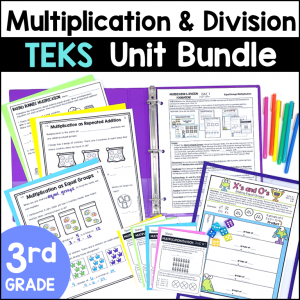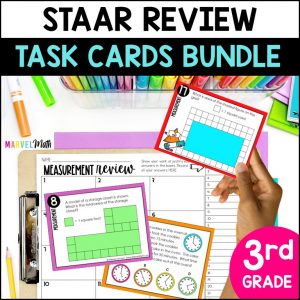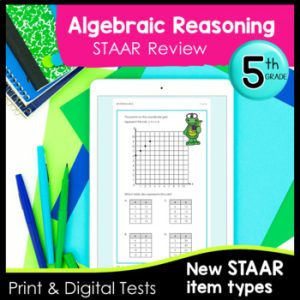Description
This resource includes 24 TEKS-aligned Printable Task Cards for Multiplication and Divsion. There are a variety of problems with arrays, repeated addition, number lines, missing factors or products, finding odd and even numbers and solving word problems.
The questions are rigorous and have bright graphics to keep students engaged. All questions are multiple choice and are STAAR formatted.
I have divided the Multiplication and Division Review into 2 sets. This resource is Multiplication and Division Review Set #1. Set 1 covers the basics of multiplication and division and includes all supporting standards. Set 2 will cover moved advanced topics such as multi-step word problems, 2×1 multiplication, and tables to represent real-word relationships.
Find the digital Google Form version HERE. Both versions have the same questions.
The questions are rigorous and have bright graphics to keep students engaged. All questions are multiple choice and are STAAR formatted.
You will love the diagnostic key that helps you easily identify student needs and form reteach groups quickly while you grade student work. The questions are rigorous and include convincing distractors (wrong answer choices), making these task cards a great tool in not only reviewing content but also giving you the opportunity to teach test-taking strategies.
What’s Included:
- 24 Task Cards
- Color and Blackline versions
- Color-coded diagnostic key to help you make re-teach groups based on the TEKS your students haven’t mastered.
- Task card sized mini-cover and a mini-key to help with organization
- Student Recording Sheets
Great ways to use these Task Cards:
- Math Station
- Guide a Small Group Lesson
- Whole Class Scoot – Students take their recording sheet to task cards posted around the room to solve each problem
- Tutoring Sessions
- End of Unit Review
- Collect Quantitative Data for Parent-Teacher Conferences or PLC and RTI Meetings
- STAAR Review
Topics include:
- One-step word problems
- Arrays
- Representing Multiplication with Repeated Addition, Skip Counting, Jumps on a Number Line and arrays
- Using Multiplication facts to solve Division problems
- Division of objects into Equal Groups, or taking out Equal Shares
- Odd and Even Numbers
- Describing Multiplication as a Comparison
- Finding Missing Factors and Products in Multiplication and Division equations
TEKS Alignment:
Supporting Standards
3.4D: (3 questions) Determine the total number of objects when equally sized groups of objects are combined or arranged in arrays up to 10 by 10.
3.4E: (3 questions) Represent multiplication facts by using a variety of approaches such as repeated addition, equal-sized groups, arrays, area models, equal jumps on a number line, and skip counting.
3.4F: (3 questions) Recall facts to multiply up to 10 by 10 with automaticity and recall the corresponding division facts.
3.4H: (3 questions) Determine the number of objects in each group when a set of objects is partitioned into equal shares or a set of objects is shared equally.
3.4I: (3 questions) Determine if a number is even or odd using divisibility rules.
3.4J: (3 questions) Determine a quotient using the relationship between multiplication and division.
3.5C: (3 questions) Describe a multiplication expression as a comparison such as 3 x 24 represents 3 times as much as 24.
3.5D: (3 questions) Determine the unknown whole number in a multiplication or division equation relating three whole numbers when the unknown is either a missing factor or product.


